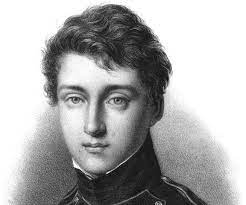
Theoretical and computational biophysicist @CarnegieMellon. Loves lipid membranes. (he/him) 🇩🇪🇺🇸
6 subscribers
How to get URL link on X (Twitter) App


 I confess: this thread is a bit more technical; it helps if you know a smidgen about both fields. But I'll try to keep the narrative PG-13. In the end I'll give you a pointer to some cool details——which you'll discover to be a shameless (and maybe unexpected) self-plug.
I confess: this thread is a bit more technical; it helps if you know a smidgen about both fields. But I'll try to keep the narrative PG-13. In the end I'll give you a pointer to some cool details——which you'll discover to be a shameless (and maybe unexpected) self-plug.

 Let’s make sure we’re all on the same page: the sun is hot, and that’s why it emits light. Not the same amount, though, for each color. How much light is emitted at what color is called a "spectrum". For the sun, it’s mostly the famous “black body spectrum”.
Let’s make sure we’re all on the same page: the sun is hot, and that’s why it emits light. Not the same amount, though, for each color. How much light is emitted at what color is called a "spectrum". For the sun, it’s mostly the famous “black body spectrum”.
 Great, welcome aboard! Let’s begin by understanding what we will bury!
Great, welcome aboard! Let’s begin by understanding what we will bury!
 Purchasing took quite a bit of research! The market is surprisingly diverse (a good thing!), and there are multiple axes along which to optimize, such as weight, range, speed, compactness, built, comfort, convenience, and of course price.
Purchasing took quite a bit of research! The market is surprisingly diverse (a good thing!), and there are multiple axes along which to optimize, such as weight, range, speed, compactness, built, comfort, convenience, and of course price.
 Our atmosphere is highly transparent to visible light. But when this light is absorbed by the ground, the ground warms up and then emits thermal (longer-wavelength, infrared) radiation. Turns out, our atmosphere is pretty opaque to that.
Our atmosphere is highly transparent to visible light. But when this light is absorbed by the ground, the ground warms up and then emits thermal (longer-wavelength, infrared) radiation. Turns out, our atmosphere is pretty opaque to that.
 First—let’s clarify what we mean by “kick-back”: if you shoot a gun, a bullet with a small mass m moves forward with some high velocity v. This gives it a momentum p = m∙v.
First—let’s clarify what we mean by “kick-back”: if you shoot a gun, a bullet with a small mass m moves forward with some high velocity v. This gives it a momentum p = m∙v.
 Let’s begin with the law itself, which says something about the light emitted by hot bodies—like glowing pokers or the sun. Specifically, let us look at the power (energy per time) such a body emits per unit area of its surface. That’s called the radiant emittance, j. /2
Let’s begin with the law itself, which says something about the light emitted by hot bodies—like glowing pokers or the sun. Specifically, let us look at the power (energy per time) such a body emits per unit area of its surface. That’s called the radiant emittance, j. /2

 The story is surely well known—but let’s nevertheless jog our memory: meet our two twins, Ashley and Mary-Kate. One of them (say Mary-Kate) will go on a journey at relativistic speed (i.e., some sizable fraction of the speed of light) to some distant star system.
The story is surely well known—but let’s nevertheless jog our memory: meet our two twins, Ashley and Mary-Kate. One of them (say Mary-Kate) will go on a journey at relativistic speed (i.e., some sizable fraction of the speed of light) to some distant star system.

 These two paradoxes rely on a well-known phenomenon of relativity, known as “Lorentz contraction”: objects that move with a velocity v relative to some observer are measured by that observer to be shortened along their direction of motion.
These two paradoxes rely on a well-known phenomenon of relativity, known as “Lorentz contraction”: objects that move with a velocity v relative to some observer are measured by that observer to be shortened along their direction of motion.

 Great, welcome aboard! Let’s go! We shall begin by looking at a 2-dimensional rotation around the origin in the (x,y)-plane. We can quantify it by an angle 𝜙 and visualize it by a line through the origin that is rotated by that angle 𝜙.
Great, welcome aboard! Let’s go! We shall begin by looking at a 2-dimensional rotation around the origin in the (x,y)-plane. We can quantify it by an angle 𝜙 and visualize it by a line through the origin that is rotated by that angle 𝜙. 

 Let’s first agree on what we’re talking about: a heat engine is a machine that turns thermal energy into mechanical work. It’s “ideal” if it runs *reversibly*. Its efficiency η tells you what fraction of thermal energy can be turned into useful mechanical work.
Let’s first agree on what we’re talking about: a heat engine is a machine that turns thermal energy into mechanical work. It’s “ideal” if it runs *reversibly*. Its efficiency η tells you what fraction of thermal energy can be turned into useful mechanical work. 